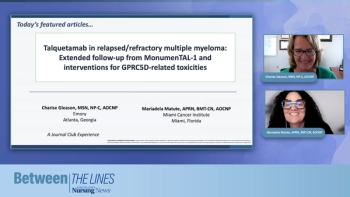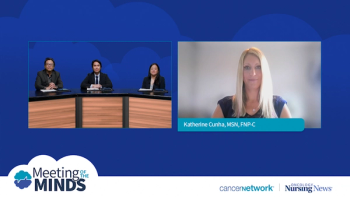
Panelists discuss that the phase 2 TALISMAN trial evaluated prophylactic strategies to prevent severe oral toxicities with talquetamab, highlighting the importance of early patient education, multidisciplinary management, and nutritional support to optimize care and maintain quality of life.












